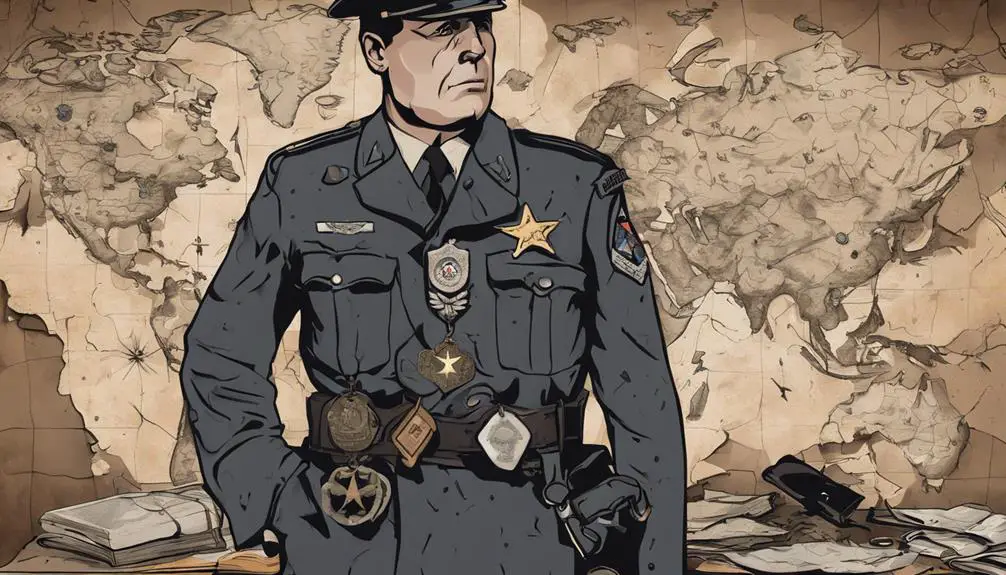As a military officer, you know that mastering specialized slang and acronyms is essential for effective communication, swift decision-making, and ultimately, mission success. You're familiar with important acronyms like CO and XO, and essential phrases like AO and FOB. You understand that tactical communication terms like ETA and SITREP foster combat camaraderie and quick decision-making. But there's more to learn, and a deeper understanding of military slang can make all the difference in high-stress situations. As you progress in your career, you'll discover the nuances of military communication that will set you apart as a leader.
Essential Acronyms for Officers
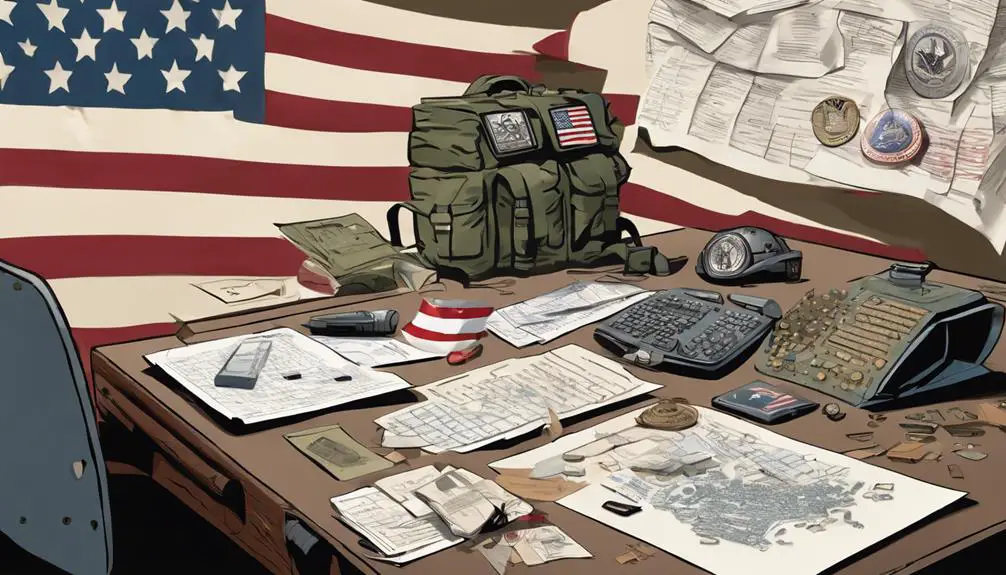
When you're communicating with fellow officers or preparing reports, understanding essential acronyms is important to guarantee clarity and efficiency. Misunderstandings can lead to critical errors, delayed responses, or even compromised operations. To avoid such scenarios, it's essential to familiarize yourself with essential acronyms that facilitate seamless communication within the military hierarchy.
In Officer Etiquette 101, you learn that respecting the Chain of Command Hierarchy is paramount. This understanding is reinforced by knowing key acronyms that define ranks, roles, and responsibilities. For instance, CO denotes Commanding Officer, while XO represents Executive Officer. Familiarity with these acronyms enables you to address your superiors correctly, ensuring respect and maintaining the established Chain of Command.
In addition to understanding officer ranks, you should also recognize acronyms related to military operations, such as OPORD (Operation Order) and SITREP (Situation Report). Mastering these essential acronyms will enhance your communication skills, allowing you to convey critical information efficiently and effectively. By doing so, you'll streamline your workflow, promote a culture of clarity, and ultimately contribute to the success of military operations.
Tactical Communication Terms
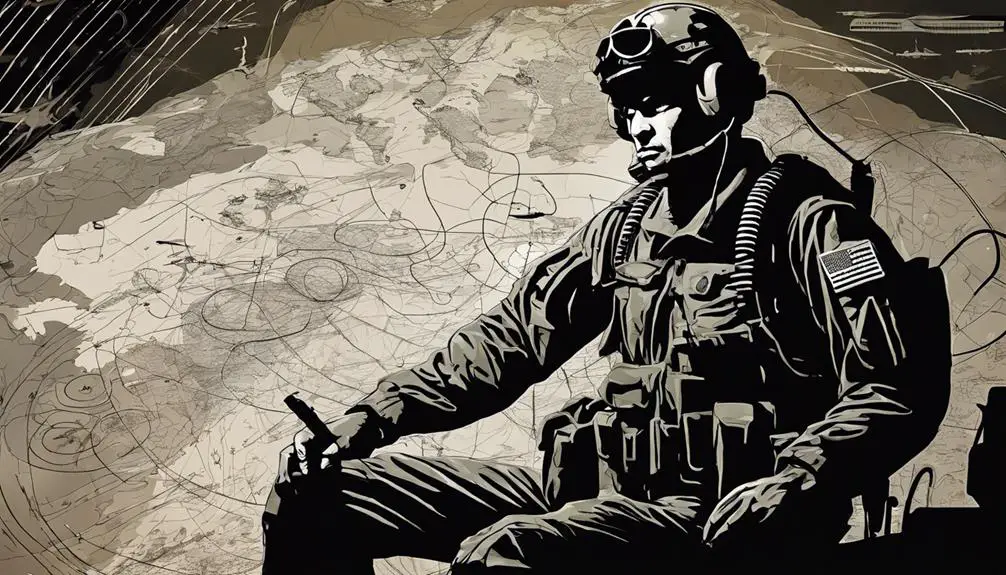
As you master essential acronyms, you'll find that effective communication in high-stress situations relies on a different set of terms that facilitate clear and concise tactical communication. In high-pressure environments, every second counts, and misunderstandings can have devastating consequences. That's why officers must be familiar with tactical communication terms that guarantee seamless coordination and execution.
Clear text protocols are vital in this setting, as they enable officers to convey sensitive information securely. These protocols encrypt messages, making it impossible for unauthorized parties to intercept or decipher them. Secure voice networks are another essential component of tactical communication. These networks utilize advanced encryption algorithms to safeguard voice transmissions, ensuring that critical information remains confidential.
In addition to clear text protocols and secure voice networks, officers must be proficient in using standardized communication procedures. This includes adhering to established call signs, frequencies, and communication protocols. By mastering these tactical communication terms, you'll be better equipped to lead your team effectively, even in the most intense situations.
Mission-Critical Slang Phrases
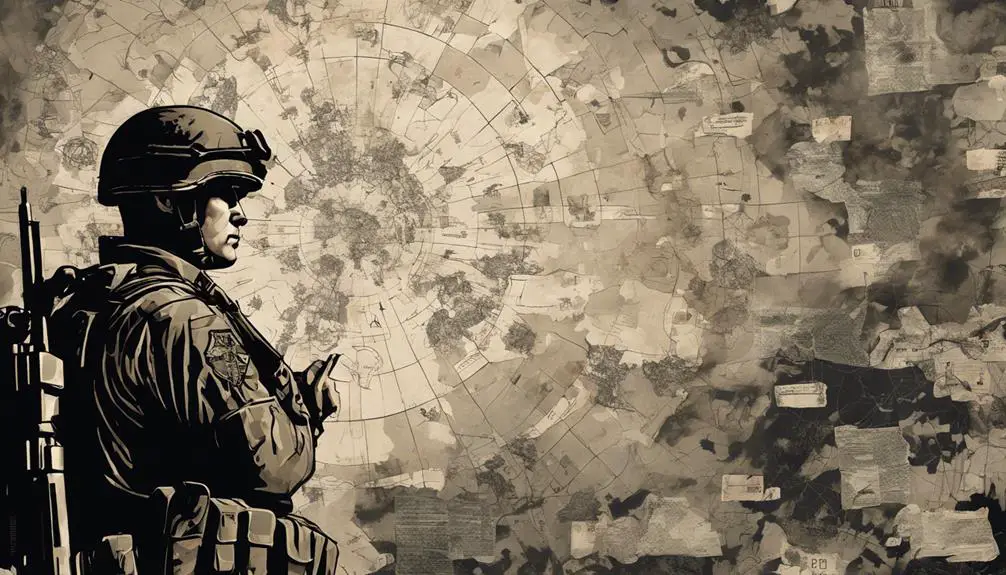
In high-pressure operational environments, you'll frequently encounter mission-critical slang phrases that facilitate rapid and precise communication among team members. These phrases are vital in combat zones, where timely and accurate communication is essential for achieving tactical objectives. You'll hear phrases like 'SITREP' (situation report) to request an update on the current situation, 'ROE' (rules of engagement) to clarify the guidelines for using force, and 'EOM' (end of message) to indicate the conclusion of a transmission.
In fast-paced combat scenarios, mission-critical slang phrases enable officers to convey complex information quickly and efficiently. For instance, 'AO' (area of operations) helps define the geographic boundaries of a mission, while 'FOB' (forward operating base) identifies a temporary base of operations. By understanding these mission-critical slang phrases, you'll enhance your ability to communicate effectively with your team, ultimately contributing to the success of your tactical objectives.
Officer Ranks and Roles
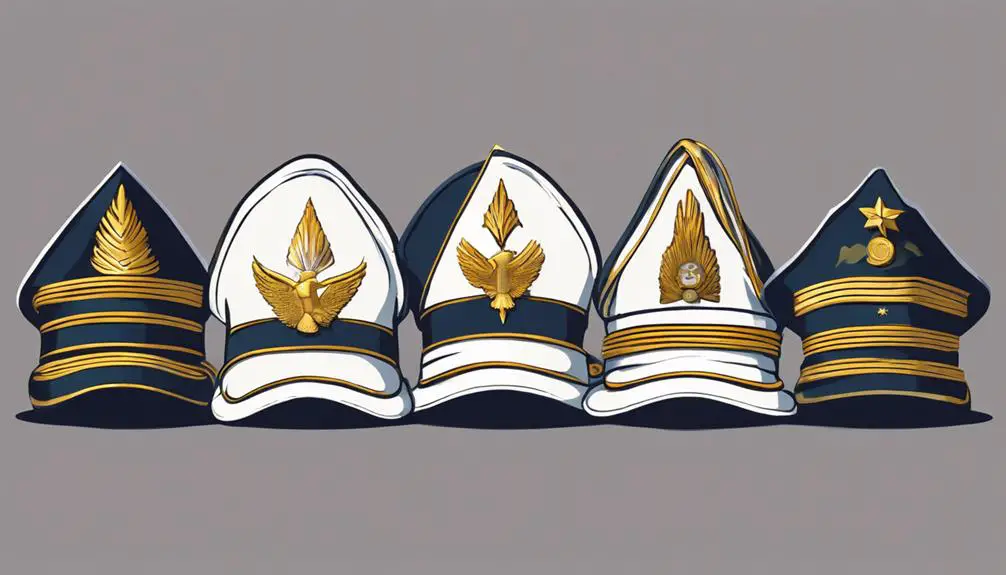
What role do you assume when you put on the insignia of an officer, and what responsibilities come with each rank? As you progress through the officer ranks, you'll undertake increasingly complex roles and responsibilities. From Second Lieutenant to General, each rank brings new challenges and opportunities for growth.
You'll start on officer career development, honing your skills through training, education, and experience. Officer mentorship programs will provide guidance and support as you navigate the complexities of military leadership. As a junior officer, you'll focus on tactical operations and leadership development. As you rise through the ranks, you'll take on more strategic roles, overseeing larger units and making critical decisions.
Throughout your career, you'll be expected to lead by example, making tough decisions and setting the tone for your unit. You'll be responsible for the well-being, training, and development of your troops, as well as the success of your missions. As an officer, you'll embody the values of the military, upholding the highest standards of integrity, courage, and honor.
Battlefield Lingo Essentials
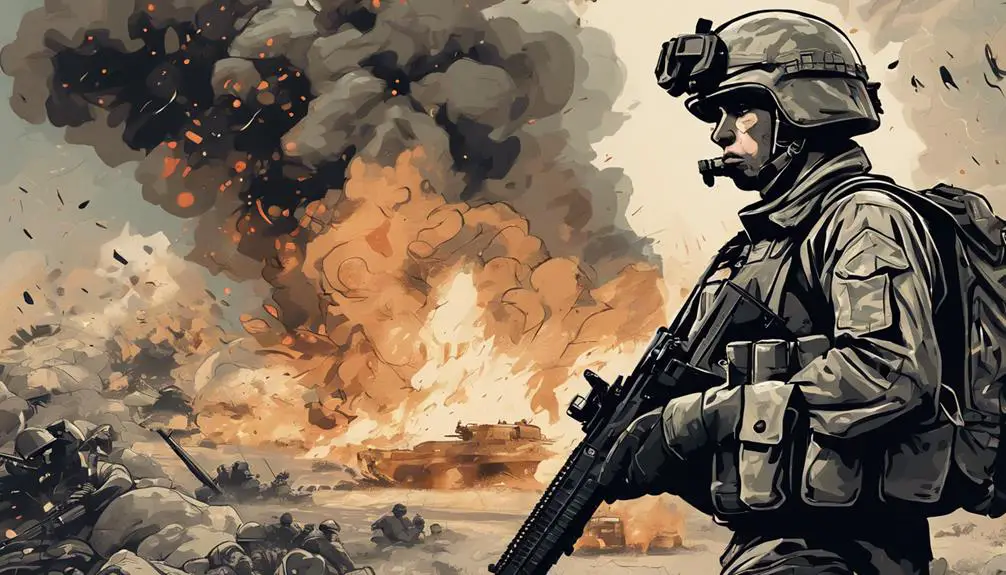
You'll need to communicate effectively on the battlefield, where clear and concise language can mean the difference between success and failure, so it's vital to familiarize yourself with military slang and terminology. In high-pressure situations, using the right terminology can save lives and guarantee mission success. Familiarize yourself with essential battlefield lingo, such as 'HOOAH' (a term used to express excitement or approval) and 'Oscar Mike' (on the move). Understanding these terms will facilitate effective communication and foster combat camaraderie among your team.
War zone wisdom dictates that concise communication is key to success. Avoid using vague terms or phrases that can be misinterpreted. Instead, use specific, standardized terminology to convey critical information quickly and accurately. For instance, 'ETA' (estimated time of arrival) and 'SITREP' (situation report) are essential terms to know. By mastering battlefield lingo, you'll enhance your ability to make quick, informed decisions and stay one step ahead of the enemy. Remember, clear communication is vital in high-stress environments, so make sure you're speaking the language of the battlefield.
Radio Communication Codes
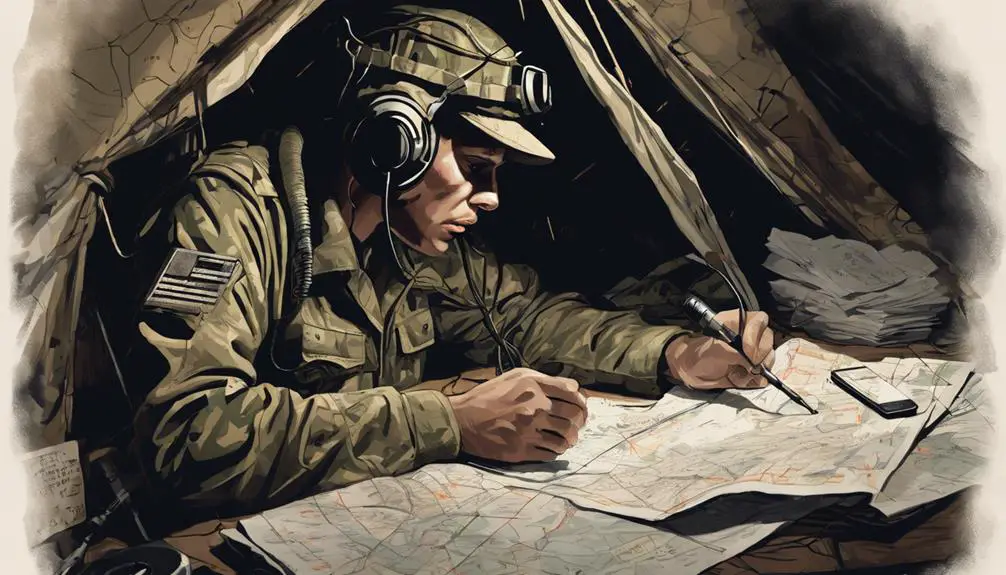
When transmitting critical information over radio frequencies, it is important to utilize standardized codes and protocols to guarantee smooth communication and minimize misinterpretation. As an officer, you must be familiar with radio communication codes to ensure seamless interaction with your team.
In radio communication, you'll frequently use the phonetic alphabet to clearly articulate letters and numbers. This alphabet replaces each letter with a code word, reducing confusion between similar-sounding letters. For instance, 'A' becomes 'Alpha,' 'B' becomes 'Bravo,' and so on. This ensures that critical information, such as coordinates or passwords, is conveyed accurately.
Radio etiquette best practices dictate that you maintain a professional tone, avoid using jargon or slang, and keep transmissions concise. It's important to identify yourself and your unit clearly, state your purpose, and wait for acknowledgement before proceeding. By adhering to these protocols, you'll minimize errors and ensure effective communication over radio frequencies.
Military Time and Dates
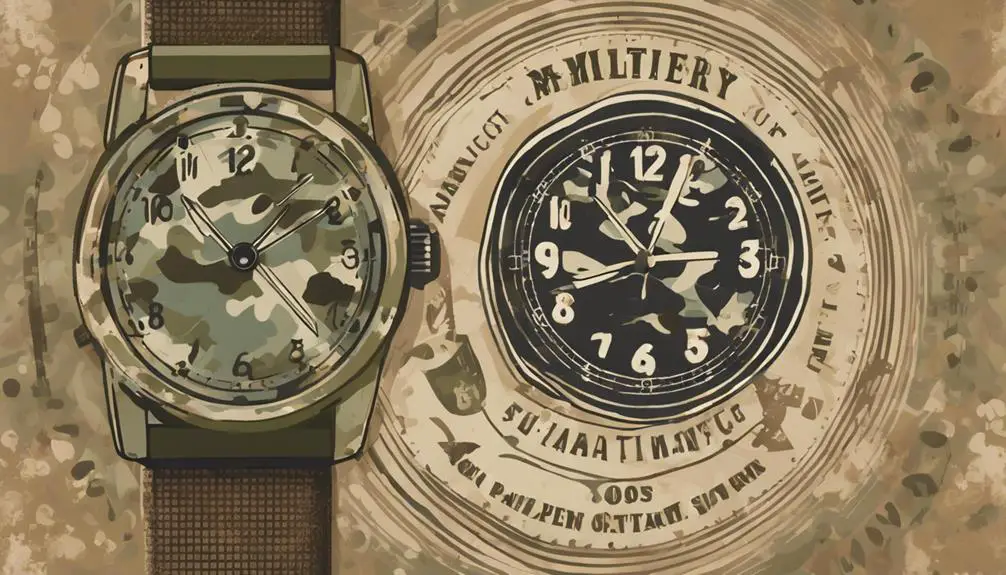
Frequently, military operations necessitate coordinating activities across different time zones, making it important to comprehend military time and dates to guarantee seamless execution of tasks. As an officer, you'll need to understand military clock conversions to make sure accurate communication. In the military, time is typically expressed on a 24-hour clock, with midnight being 0000 hours and 11 PM being 2300 hours. This eliminates any confusion between AM and PM.
When it comes to dates, you'll need to follow a specific format. Military date format explanations typically follow the Day-Month-Year (DD-MM-YY) or Day-Month-Year-Hour-Minute-Second (DD-MM-YY-HH-MM-SS) format. This format ensures clarity and consistency across different time zones and operations. Understanding these formats is important for effective communication and coordination. By mastering military time and dates, you'll be better equipped to lead your team and execute tasks efficiently.
Common Officer Abbreviations
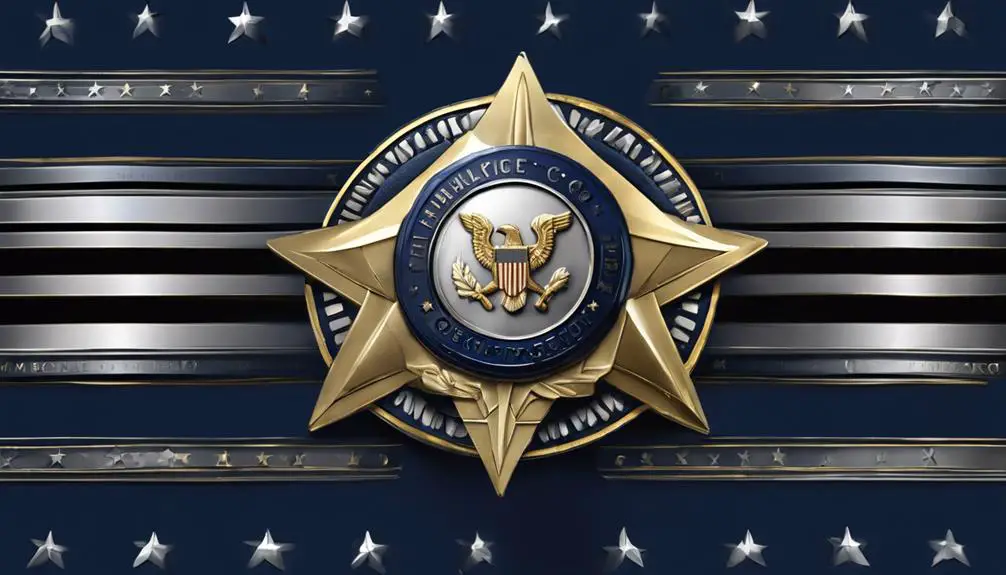
As an officer, you're expected to be familiar with a range of abbreviations that are commonly used in military communication to convey complex information quickly and efficiently. These abbreviations are essential for effective communication, particularly in high-stress situations where clarity and speed are paramount.
You'll frequently encounter abbreviations like CO (Commanding Officer), XO (Executive Officer), and NCO (Non-Commissioned Officer). Understanding these abbreviations is crucial for maintaining officer etiquette expectations, such as addressing senior officers correctly. Additionally, familiarity with these abbreviations will facilitate smoother communication with your team, ensuring that critical information is conveyed accurately and efficiently.
In officer mentorship programs, you'll likely encounter more specialized abbreviations specific to your branch or unit. For instance, you may come across abbreviations like S-1 (Personnel Officer) or S-3 (Operations Officer). Mastering these abbreviations will not only enhance your communication skills but also demonstrate your professionalism and attention to detail. By staying up-to-date on common officer abbreviations, you'll be better equipped to lead your team effectively and uphold the highest standards of military professionalism.
Frequently Asked Questions
Can Enlisted Personnel Use Officer-Specific Slang Phrases?
When you're in the military, you might wonder if enlisted personnel can use officer-specific slang phrases. Generally, it's not recommended. The rank structure is clear, and using exclusive slang can blur the lines. Slang exclusivity is often tied to officer culture, and using it as an enlisted personnel might be seen as overstepping boundaries. Stick to your own branch's slang and respect the hierarchy to avoid misunderstandings.
Are Military Slang Terms Universal Across Different Countries?
As you explore the world of military slang, you'll discover that the answer to universality lies hidden behind cultural barriers. The truth is, military slang terms are not universally accepted across different countries. Linguistic evolution has led to unique phrases and expressions in each nation's military, shaped by local dialects and historical context. While some terms may overlap, the peculiarities of each country's military culture guarantee that slang remains distinct and region-specific.
How Do Officers Adapt to New Slang Terms During Deployment?
When you're deployed to a new region, adapting to local slang terms is vital for effective communication. Language barriers can hinder your ability to connect with locals, so it's important to immerse yourself in the local culture. During deployment, you'll need to quickly learn new slang terms to facilitate collaboration and build trust with your team and local counterparts. Cultural immersion is key to mastering local dialects and avoiding misunderstandings that can compromise mission success.
Is Military Slang Used in Formal Written Communication?
Did you know that 70% of military communication is written? When it comes to formal written communication, you'll rarely find military slang used. The tone is typically formal, and slang is avoided to maintain clarity and professionalism. However, there are exceptions, such as in situation reports or intelligence briefs, where specific slang terms might be used for brevity and context.
Do Officers Use Slang When Communicating With Higher-Ranking Officials?
When communicating with higher-ranking officials, you're likely to maintain a level of formality in your language. You understand that using slang or colloquialisms can undermine rank respect. In formal settings, Officer speak tends to be more polished and professional. You'll refrain from using informal language to guarantee your message is conveyed clearly and respectfully. This formality helps maintain the dignity of your role and shows deference to those of higher rank.

